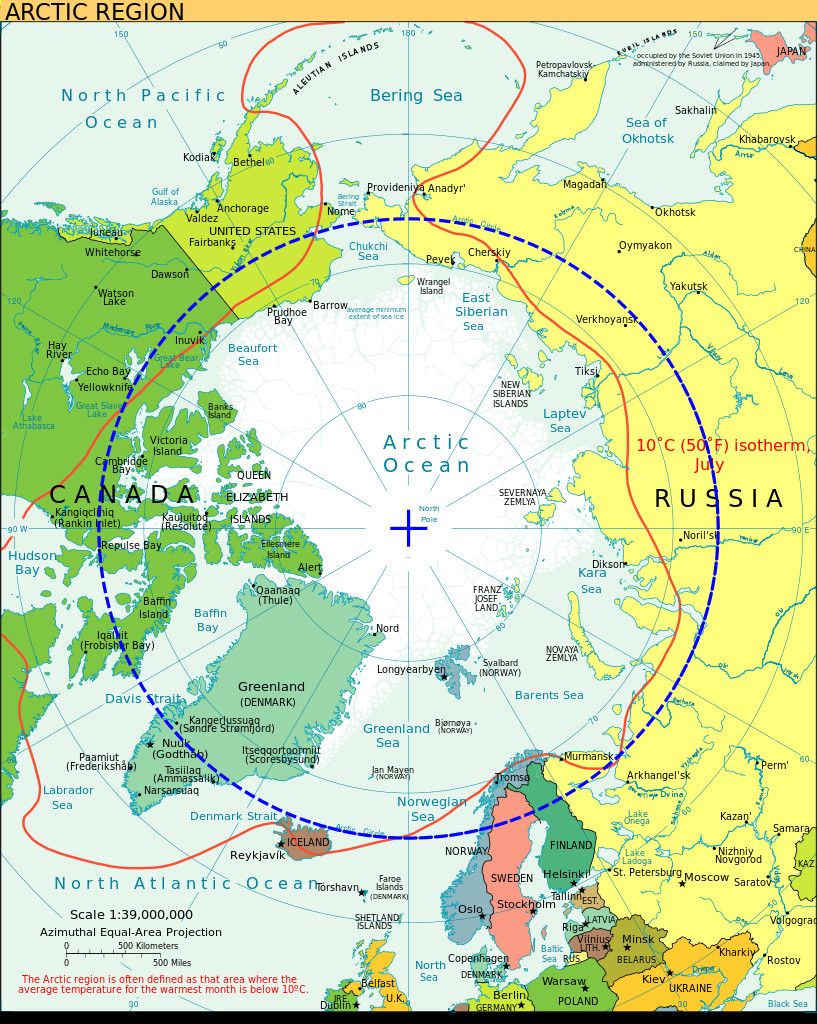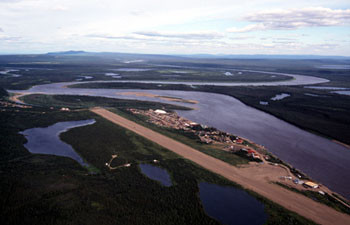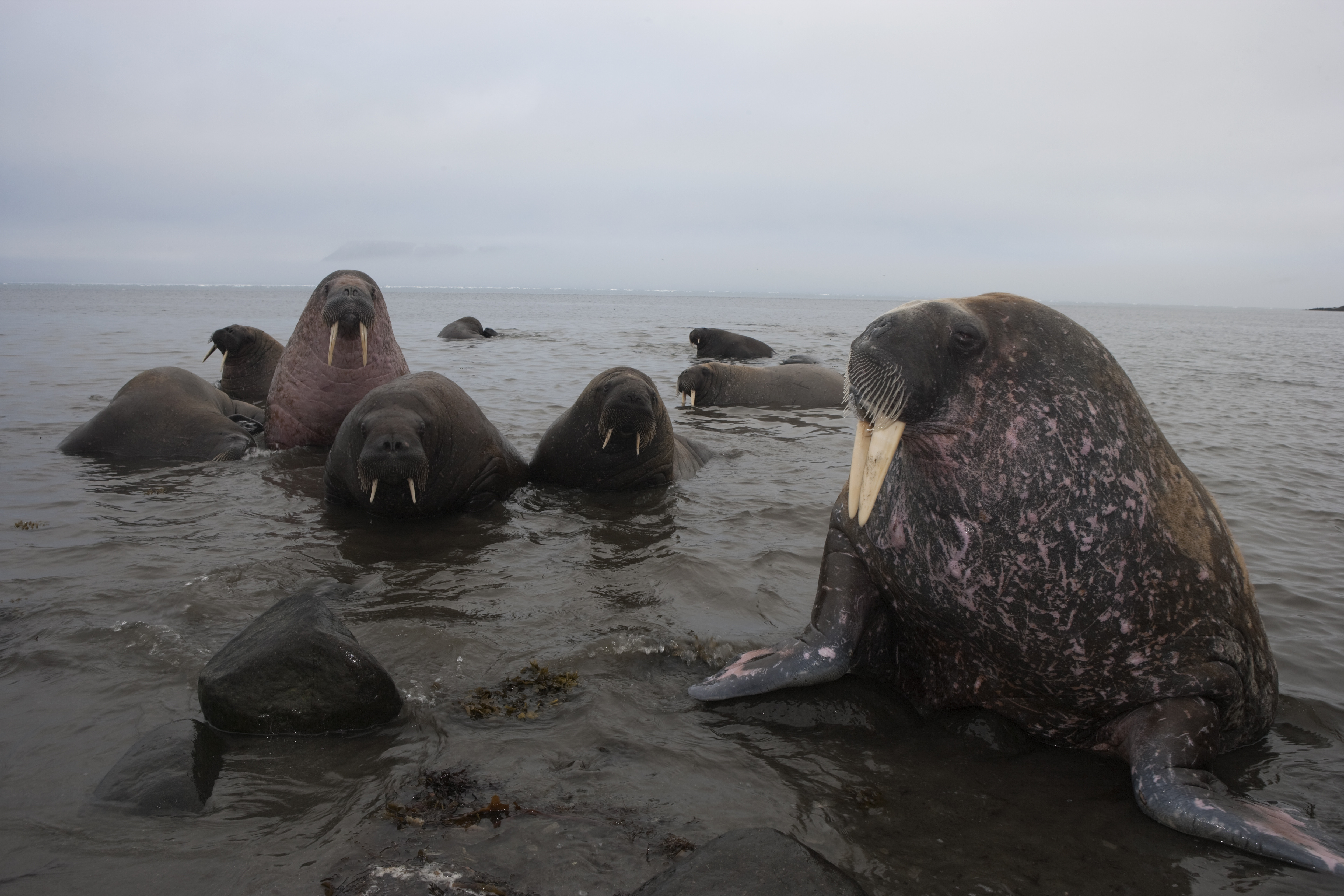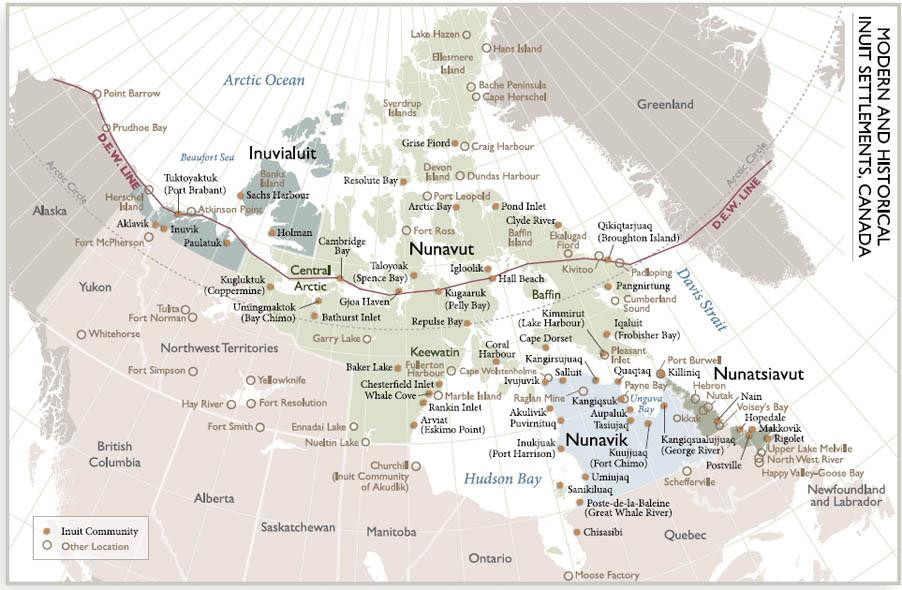The Arctic Circle is more than just a line on a map; it’s a geographical marker of a unique polar region where the sun behaves in extraordinary ways. This imaginary circle encircles the Earth at approximately 66°33′ North latitude. Let’s delve into understanding where exactly the Arctic Circle is, and what makes it so fascinating.
 Arctic CircleA map highlighting the Arctic Circle in blue, showcasing its position around the northernmost parts of the globe.
Arctic CircleA map highlighting the Arctic Circle in blue, showcasing its position around the northernmost parts of the globe.
Defining the Arctic Circle: A Line of Unique Sunlight
The Arctic Circle is defined by the phenomenon of the solstices. It’s the southernmost latitude in the Northern Hemisphere where the sun can remain continuously above or below the horizon for 24 hours – these events occur at the June and December solstices. To the north of this circle, in areas closer to the North Pole, the number of days with these extreme sunlight conditions increases dramatically, leading to what we know as the ‘Land of the Midnight Sun’ and the ‘Polar Night’.
During the summer solstice, around June 20th or 21st, anyone standing on or within the Arctic Circle will experience the midnight sun. This means the sun will not set for at least 24 hours. Conversely, during the winter solstice, around December 21st or 22nd, the sun will not rise for at least 24 hours, leading to the polar night. It’s important to note that even during the polar night, some indirect sunlight can still be visible, especially in areas just north of the Arctic Circle, due to the refraction of light through the Earth’s atmosphere.
%22,%20%22caption_fr%22:%20%22%22,%20%22title_en%22:%20%22Summer%20Solstice%22,%20%22caption_en%22:%20%22Illumination%20of%20the%20Earth%20by%20the%20sun%20on%20the%20day%20of%20the%20summer%20solstice%20in%20the%20northern%20hemisphere.%20%22,%20%22title_fr%22:%20%22%22%7D)
Diagram illustrating Earth’s tilt and sunlight exposure during the June Solstice in the Northern Hemisphere, leading to continuous daylight within the Arctic Circle.
%22,%20%22caption_fr%22:%20%22%22,%20%22title_en%22:%20%22Winter%20Solstice%22,%20%22caption_en%22:%20%22Illumination%20of%20the%20Earth%20by%20the%20sun%20on%20the%20day%20of%20the%20winter%20solstice%20in%20the%20northern%20hemisphere.%22,%20%22title_fr%22:%20%22%22%7D)
Diagram showing Earth’s tilt during the December Solstice, resulting in prolonged darkness within the Arctic Circle.
Midnight Sun and Polar Night: Experiencing Extreme Day and Night
As you travel further north from the Arctic Circle towards the North Pole, the periods of continuous daylight in summer and continuous darkness in winter become more extended. At the North Pole itself, there are six months of daylight and six months of darkness. This dramatic phenomenon is due to the Earth’s axial tilt of approximately 23.5 degrees. This tilt causes the Northern Hemisphere to lean towards the sun during the Northern Hemisphere summer, and away from it during winter.
The period of continuous daylight in the Arctic summer is famously known as the midnight sun, a time when the sun never dips below the horizon. Conversely, the polar night is a period of prolonged darkness in the Arctic winter. The start and end dates of these periods vary depending on the exact latitude within the Arctic Circle; the closer to the North Pole, the longer these periods last.
Geography and Human Life Around the Arctic Circle
It’s crucial to understand that the Arctic Circle is a line of latitude related to sunlight, not necessarily climate. While it is associated with cold climates, it doesn’t define a specific climatic zone. For example, trees can grow north of the Arctic Circle, particularly in areas like the Mackenzie Delta in Canada, demonstrating that the environmental conditions can vary. In contrast, regions at similar latitudes but further south, such as northern Quebec, might have a treeline significantly south of the Arctic Circle.
Despite the challenging environment, people do live within and north of the Arctic Circle. Inuvik, located in the Mackenzie Delta, is a notable Canadian town north of the Arctic Circle. It’s even accessible by road via the Dempster Highway, highlighting human adaptability in this region. Other communities near the Arctic Circle in Canada include Old Crow in Yukon, Fort McPherson in the Northwest Territories, and Repulse Bay (Naujaat) and Qikiqtarjuaq in Nunavut.
 Colourful Inuvik apartmentsVibrant apartment buildings in Inuvik, Northwest Territories, showcasing community life north of the Arctic Circle.
Colourful Inuvik apartmentsVibrant apartment buildings in Inuvik, Northwest Territories, showcasing community life north of the Arctic Circle.
 Old Crow SettlementThe remote settlement of Old Crow, Yukon, situated along the Porcupine River, exemplifies human habitation near the Arctic Circle.
Old Crow SettlementThe remote settlement of Old Crow, Yukon, situated along the Porcupine River, exemplifies human habitation near the Arctic Circle.
Facing the Challenges of the Arctic
The Arctic region, including areas around the Arctic Circle, is facing significant challenges, particularly from climate change. The Arctic is warming at a rate almost twice as fast as the global average, leading to dramatic environmental changes. For the Inuit and other Indigenous peoples of the Arctic, these changes are profoundly impacting traditional ways of life. Shifts in migration patterns and population sizes of arctic animals, which are vital for sustenance and culture, are being observed.
Furthermore, increased resource development and industrial activities pose threats to the delicate Arctic ecosystems and animal habitats. The well-being of species like walruses and seals, crucial to the Inuit diet and culture, are increasingly at risk. These environmental and ecological changes present complex challenges for both the environment and the human populations living in and around the Arctic Circle.
 Atlantic walrus partially submerged in Arctic waters.An Atlantic walrus in Arctic waters, a species facing threats due to climate change impacting the Arctic region.
Atlantic walrus partially submerged in Arctic waters.An Atlantic walrus in Arctic waters, a species facing threats due to climate change impacting the Arctic region.
 Harp Seal Mother and BabyA mother and baby Harp Seal, an example of Arctic wildlife whose habitats are vulnerable to environmental changes.
Harp Seal Mother and BabyA mother and baby Harp Seal, an example of Arctic wildlife whose habitats are vulnerable to environmental changes.
 Inuit settlements mapA map illustrating modern and historical Inuit settlements across the Arctic, highlighting the vast regions inhabited by Indigenous communities.
Inuit settlements mapA map illustrating modern and historical Inuit settlements across the Arctic, highlighting the vast regions inhabited by Indigenous communities.
In conclusion, the Arctic Circle is a fascinating geographical boundary defined by unique patterns of sunlight and darkness. It marks the gateway to the Arctic region, a place of extreme natural phenomena, unique human adaptations, and significant environmental challenges. Understanding where the Arctic Circle is located helps us appreciate the distinct characteristics and the critical issues facing this important part of our world.

